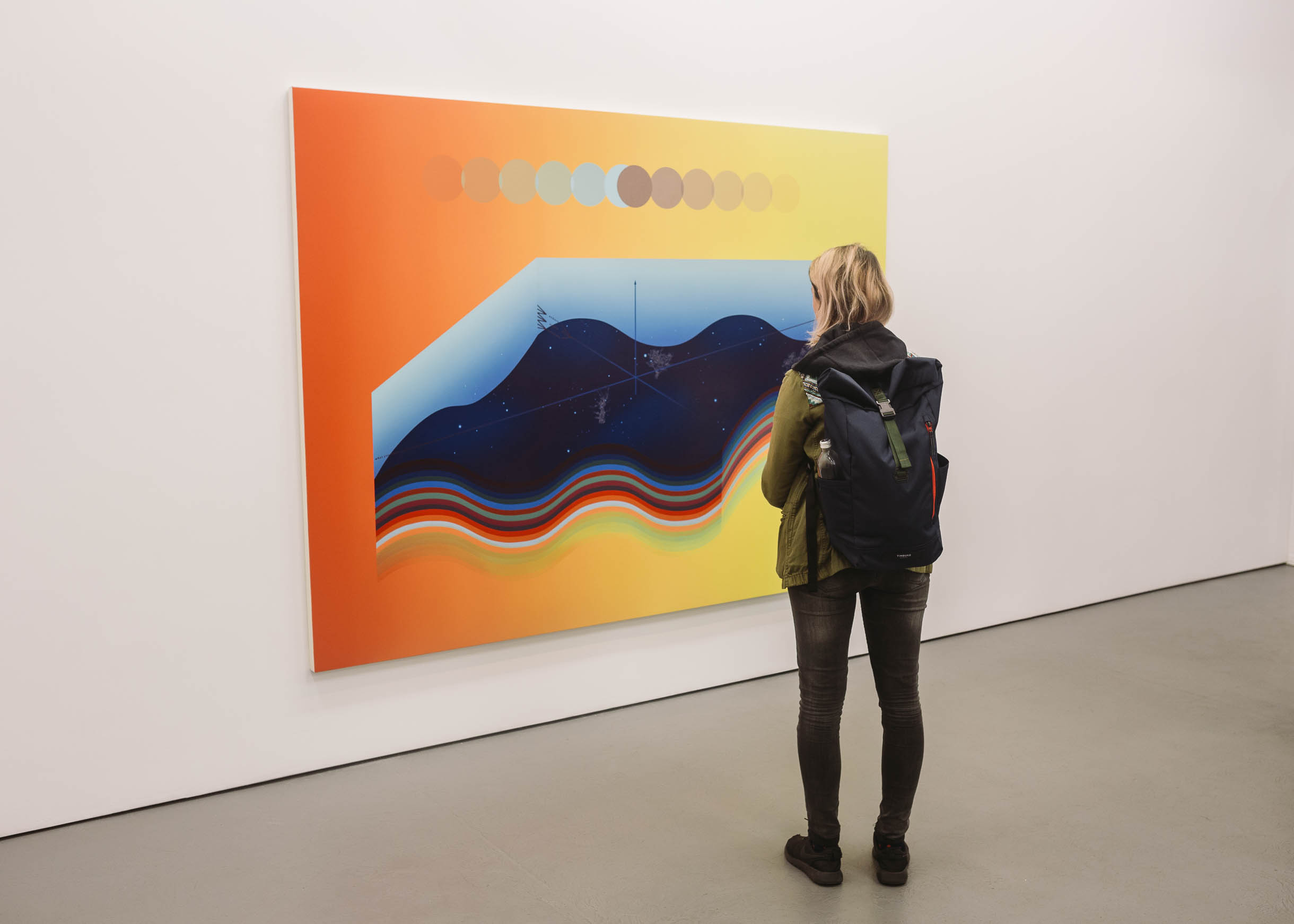Nicolas Grenier debuts latest works in his first solo exhibition with Montreal gallery
“If I was to … think about how to position myself within the current political landscape, which words or concepts would I use to start laying down the ground?” This was one of the questions artist Nicolas Grenier asked himself when creating the works for his most recent exhibition.
The multi-disciplinary artist and alumnus of Concordia’s fine arts program teamed up with Galerie Antoine Ertaskiran to present Precarious Geographies, a collection of paintings examining ideas of political and social structures. Grenier, who is interested in contemporary politics and news, wanted to create works that expressed concepts like personal beliefs and activism and what they mean within our current political climate. He then came up with the idea of representing them by using diagrams to, essentially, “map” them out.
According to the artist, Precarious Geographies is about the relationship between activism and philosophy. Grenier explained that, since the election of the current American president, people have become more outspoken and committed to their political views. The artist said he believes that by taking an activist stance, a person must “believe in something enough to fight for it.” This idea can present some problems, however, because it assumes a person’s view or belief is absolute. In his life and work, Grenier enjoys questioning the concept of absolute ideas, and so he decided to explore it further.
Upon coming up with this idea, Grenier then asked himself: “How do I, as a painter, visually display [it]?” The artist, who sometimes spends months developing his projects, admitted he liked the idea of land as a starting point for the pieces in Precarious Geographies. He used it to build upon the ideas and concepts in his paintings.
From there, the artist decided to include elements of text and diagrams, as a way to surprise the viewer since diagrams are not usually in conventional paintings. According to Grenier, the use of words in his paintings “restricts the range of interpretations [of a piece], but it also pushes the work in a specific direction. It has some openness, but also some closure.” The exhibition is Grenier’s attempt to physically map out “philosophical and political ambiguities” that exist in the current political climate of the Western world by painting them in an abstract but concrete way.
A piece titled Going for it occupies an entire wall of the gallery. A warm, brick-coloured background gives way to what can only be described as a “stack” of different coloured squares. The bottoms of the squares fade into horizontal lines that stretch across the bottom third of the canvas. Sharp edges and perfect gradients showcase Grenier’s practiced technique and make it hard to believe the pieces are in fact paintings and not graphic art.
The colours Grenier uses are extremely saturated and somewhat unnatural. The artist explained that it sometimes takes him months to develop and mix colours, and although he admitted that nature does influence his work, he wanted to create colours not typically seen in the natural world.
On a wall adjacent to Going for it hangs What We Want / What You Want, one of the more vibrant pieces within the exhibition. A large block of colour sits in the middle of the canvas, and resembles a cross-section of a piece of earth. The top layer of the block is a deep blue with white flecks, emulating a night sky. Lines cut across this layer, diagonally dividing the block into four sections—much like axes on a grid. At the ends of each axis is written—in small, inconspicuous text—the words “what we want” or “what you want.” Since the two axes travel in opposite directions, the piece suggests the two phrases exist in separate spaces. Underneath the blanket of deep blue are layers of bright reds, greens and burgundies. The block is suspended against a background gradient of vibrant yellow and red.
Both Going for it and What We Want / What You Want were created this year. The entire collection of works in this exhibition came together over the past 12 to 18 months. A self-proclaimed thoughtful and meticulous artist, Grenier allows himself ample time to mull ideas over and carefully assemble every piece. The artist, who works out of Montreal and Los Angeles, is excited to share his first solo collaboration with Galerie Antoine Ertaskiran.
Precarious Geographies will be on display until Nov. 11. The gallery is located at 1892 Payette St. and is open from 10 a.m. to 5 p.m., Tuesday through Saturday, or by appointment. Admission is free.
